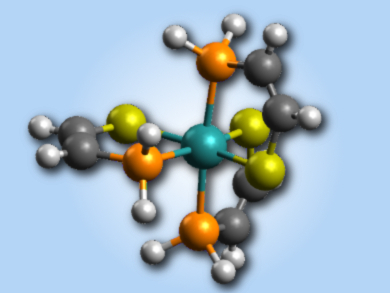Dithiolenes play a key role in understanding non-innocent ligands, i.e., redox-active ligands whose oxidation state can be difficult to determine. The chelating ligand diphenylphosphinobenzenethiolate (dppbt) can delocalize the electron density like dithiolenes. The recently synthesized tris(thiolate) complex [Ru(dppbt)3]+ (1+) readily undergoes addition reactions with a variety of unsaturated organic compounds.
Michael B. Hall and collegues, Texas A&M University, College Station, TX, USA, showed that high-level ab initio calculations provide an unambiguous electronic structure description of 1+. DFT calculations, on the other hand, are not able to do so. The ground state electronic structure of 1+ is a singlet diradical state. It is best described as an open-shell diradical singlet state with antiferromagnetic coupling between a dπ electron on the Ru(III) and pπ electron on the one of the sulfur atoms.
This explains the experimental reaction of 1+ with alkenes and alkynes. The dominant radical character of one of the sulfur atoms stabilizes a vinyl substituent, which explains the regioselectivity.
- Understanding the Radical Nature of an Oxidized Ruthenium Tris(thiolate) Complex and Its Role in the Chemistry,
Hao Tang, Jia Guan, Michael B. Hall,
J. Am. Chem. Soc. 2015.
DOI: 10.1021/jacs.5b09309




